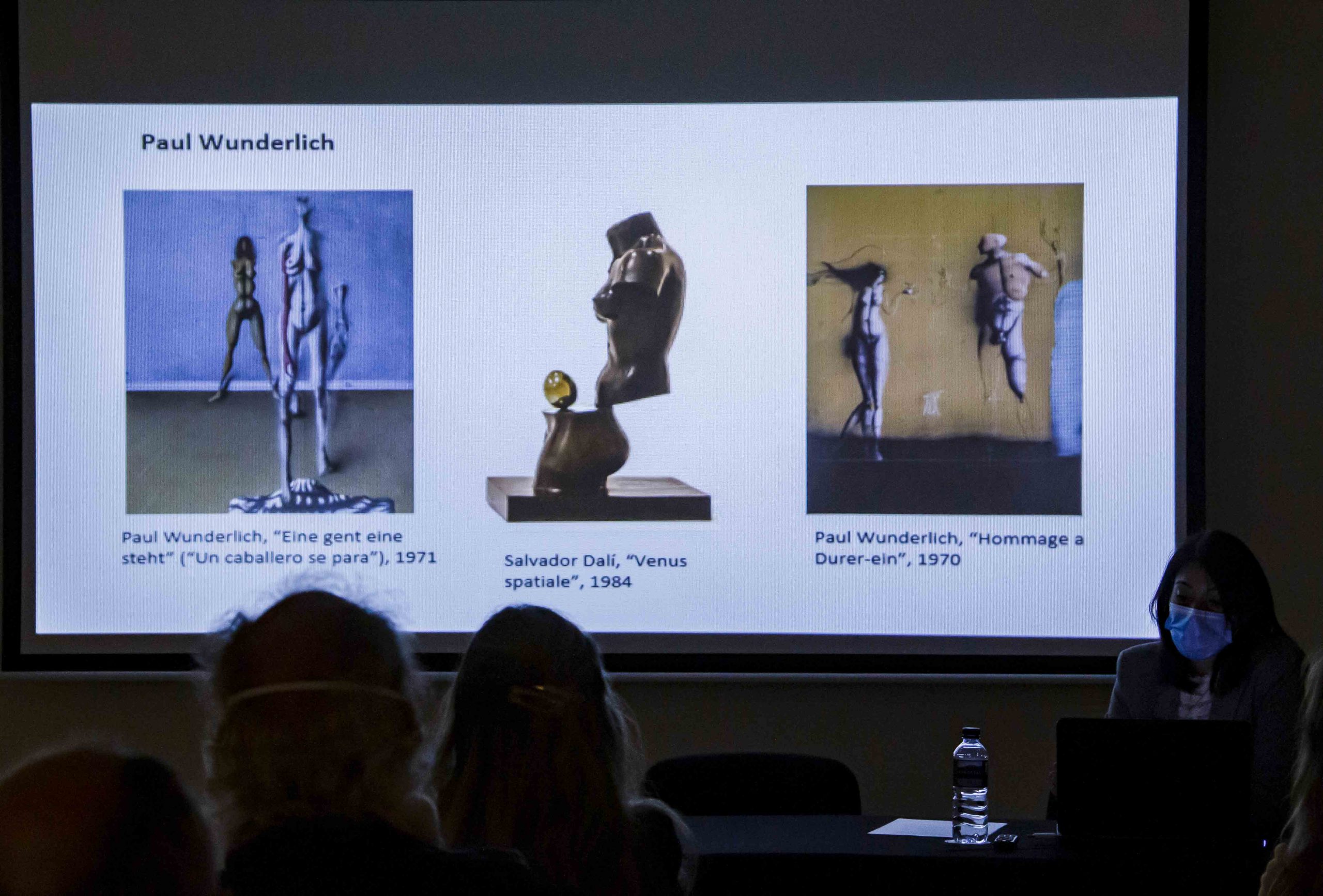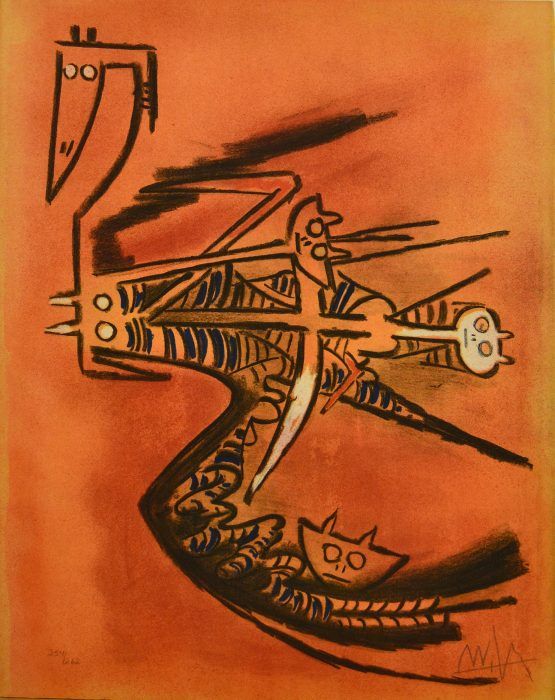A transversal perspective through the Ralli Collection
Surrealism or surrealisms?
This exhibition begins with the idea that there is not just one surrealism or a single way of understanding it. Artists like Arcimboldo, Hieronymus Bosch, de Chirico and Chagall were surrealists before the name even existed. We also find the surrealism of André Bretón, that of those who were expelled from the movement or who questioned it, surrealism after it ended definitively, abstract, figurative or pop surrealism. Perhaps, instead of talking about Surrealism with a capital “S”, we should talk about surrealisms in plural.
The exhibition Surrealisms. From Giorgio de Chirico to Francis Bacon explores the different languages and trajectories of some of the most prominent surrealist artists in history, such as André Masson, Salvador Dalí, Man Ray and Joan Miró. It also includes some young artists who joined the movement during its last stage and who, like the aforementioned, continued to create surrealist art beyond it. The exhibition also reflects on how surrealism is part of the body of work of some artists without the need to adhere to this artistic current or to a single style. This can clearly be seen in figures like Giorgio de Chirico, Marc Chagall and Francis Bacon. Some of these cases have a more evident and assimilated relationship with surrealism, and others might appear alien to this style, although as we will see in this exhibition, they share a noticeable connection.
-
 Green Harpist, 1945
Green Harpist, 1945John Banting
Ralli Collection
Mixed technique on paper
74 x 55 cm -
 Perfect communication, 1971
Perfect communication, 1971Conroy Maddox
Ralli Collection
Mixed technique on cardboard
25 x 18 cm -
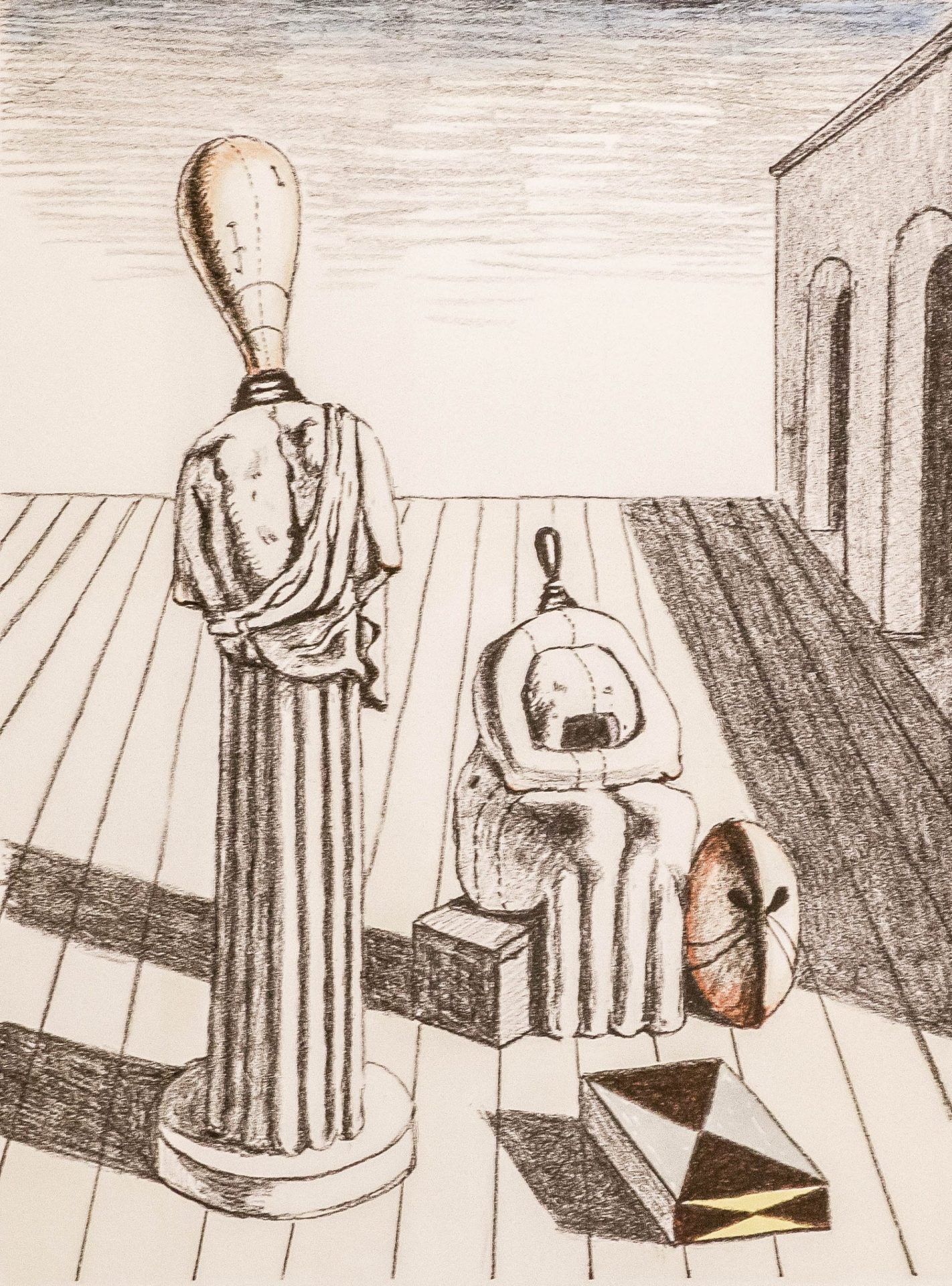 Les muses inquietantes, 1969
Les muses inquietantes, 1969Giorgio De Chirico
Ralli Collection © Giorgio De Chirico, VEGAP, Marbella, 2024
Litography on paper
Ed. 84/90
51 x 70 cm -
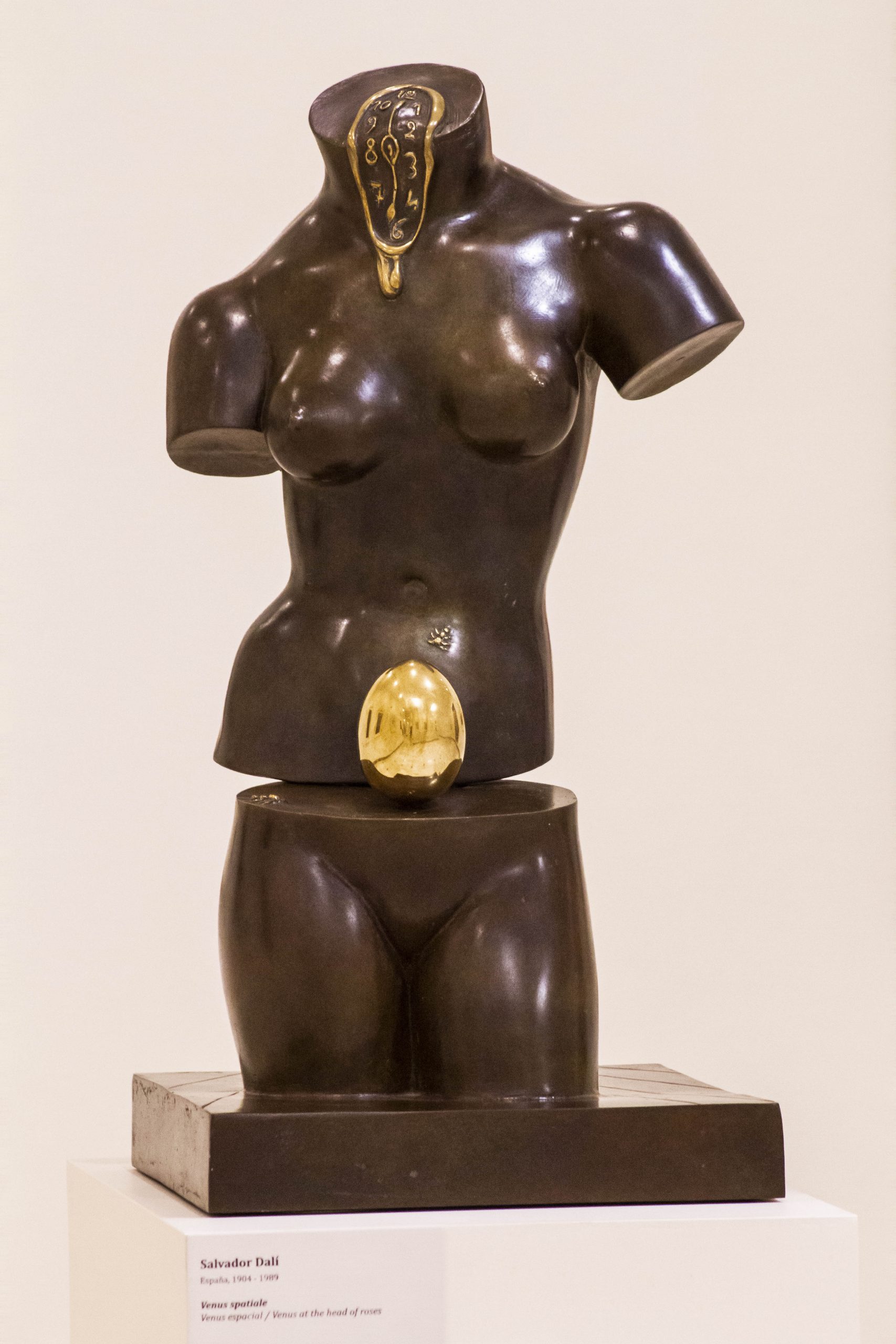 Venus spatiale, 1984
Venus spatiale, 1984Salvavdor Dalí
Ralli Collection © Salvador Dalí, Fundació Gala-Salvador Dalí, VEGAP, Marbella, 2024
Bronze
Ed. 78/350
66 x 36 x 30 cm -
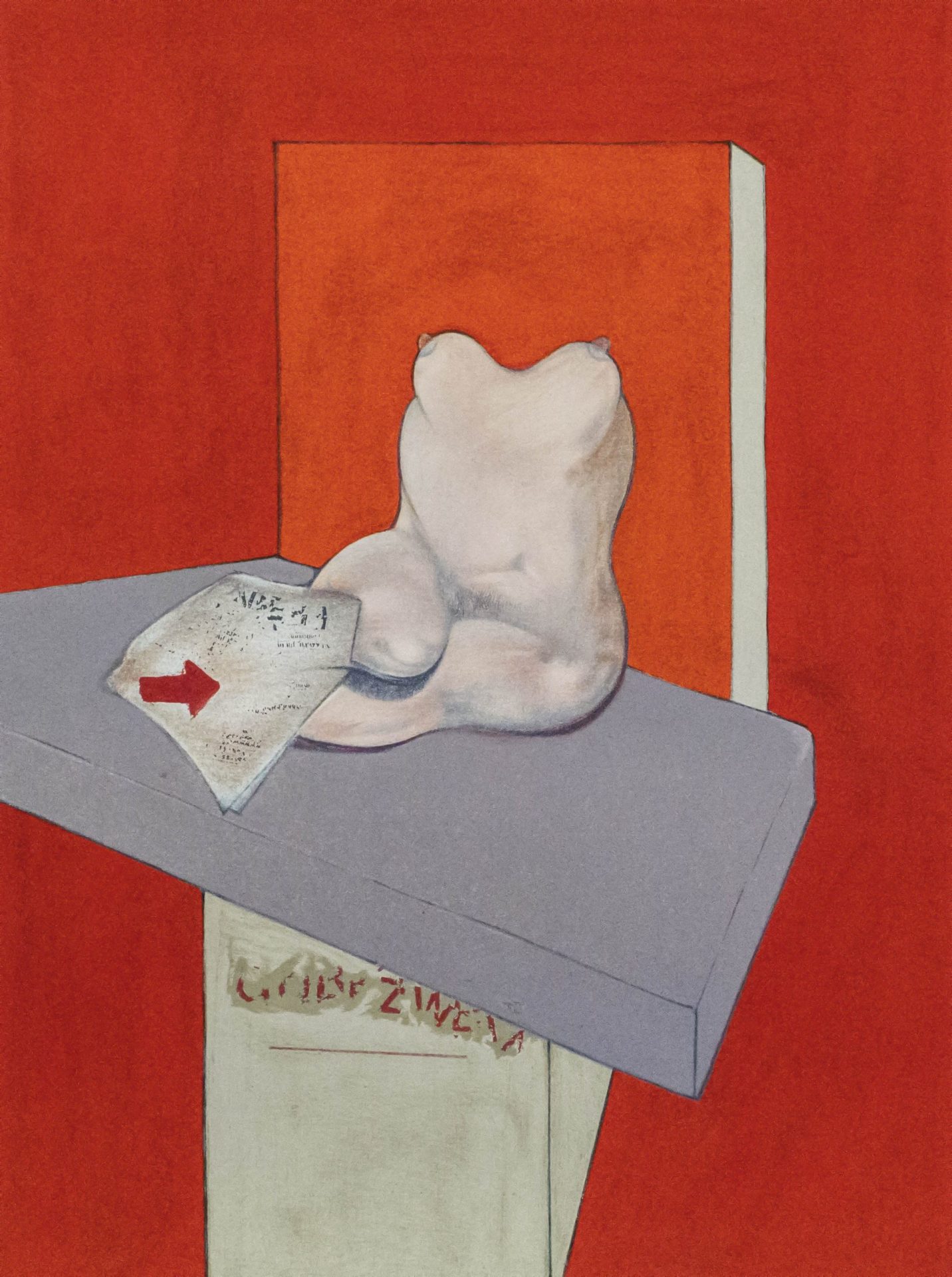 Etude du corps humain, 1980
Etude du corps humain, 1980Francis Bacon
Ralli Collection © The Estate of Francis Bacon. All rights reserved. DACS/VEGAP. Marbella, 2024
Litography on paper
Ed. 3/150
103 x 53 cm -
 L’orestie d’eschyle, 1984
L’orestie d’eschyle, 1984Francis Bacon
Ralli Collection © The Estate of Francis Bacon. All rights reserved. DACS/VEGAP. Marbella, 2024
Litography on paper
Ed. 3/150
103 x 53 cm -
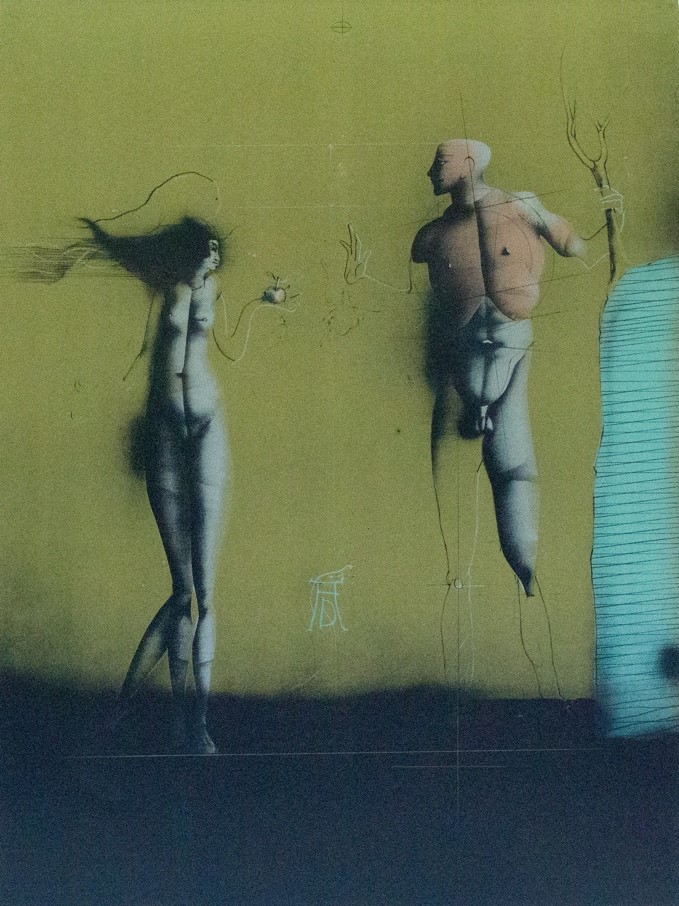 Hommage a Durer-ein, 1970
Hommage a Durer-ein, 1970Paul Wunderlich
Ralli Collection
Litography on paper
Ed. 49/75
68 x 85 cm
Beyond the surrealist movement
The surrealist movement arose within the historical avant-gardes in France as a synonym for freedom. However, it is striking that one manifesto after another was published, up to a total of three, in an attempt to define and stipulate what it means to be surrealist and what does not. After its initial definition, the most reasonable conclusion would be that it is an atemporal style which goes beyond theoretical postulates and has no limits and no end.
Surrealism has always tackled subjects that are taboo for society, by representing a reality that can be imaginary, symbolic or illusory, although no less true for that. The artists of the surrealist movement reflected this view of the world through the exploration of the subconscious and the dreamlike. Today we see how personal introspection and symbolic language continued to be obvious resources in the surrealist imaginary.
This collective exhibition takes a transversal approach towards surrealism in the history of contemporary European art that differs to the traditional one, based on works belonging to the Ralli Collection. In it we see a new way of tackling the vast production of surrealist art and its different interpretations.
Related artists
RELATED WORKS
ACTIVITIES AGENDA
RELATED PROGRAMS
